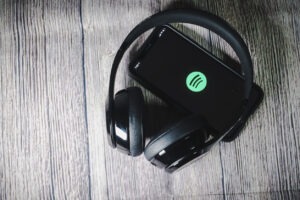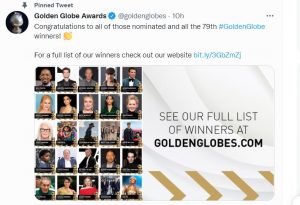How social media strategies should adapt to COVID-19
The crisis has changed how many communicators interact with their communities, especially online. Here’s how your social media channels can be a part of the solution.
Editor’s note: This article is a re-run as part of our countdown of top stories from the past year.
Everything is moving online, whether its your weekly poker game or your 10 a.m. meeting with your sales team.
That’s OK for all the connections that you already have, but what about reaching out along more tenuous connections, to customers or the general public? The coronavirus crisis is one more reason why it is crucial to be a wizard on social media.
How should your social media strategy change and what are some opportunities for social media to be a solution for the problems posed by the crisis?
We caught up with Kristin Johnson, VP of content and communications for Sprout Social, a social media management platform, for insights.
Here’s what she had to say:
PR Daily: What are some tactics for using social to replace planned in-person events/activations?
Johnson: In-person activations and events are a core component of many businesses’ customer acquisition and engagement efforts, which creates a big obstacle for marketers in our current climate.
The good news is that we are more digitally connected than ever before, and with the right strategy brands can create impactful experiences online. For those looking to leverage social in this area, here are a few tips to keep in mind:
- Get a pulse on your audience’s interests. Before turning an in-person event into a digital experience, be sure to check in with your target audience to ensure the content is still relevant and they’re interested in engaging and attending virtually. For some audiences, it will be an easy and welcome transition, but others might only want the in-person networking opportunities that a digital event can’t quite replicate. Social media is a great place to learn which is applicable for your event—run polls, start up a live chat or ask open-ended questions to your social community to gather feedback and new ideas.
- Direct conversation to social media channels. Use social media as your home base for attendee interaction and participation in your digital event. Start a Twitter thread for general conversation around the event, create an event hashtag or have people submit and answer questions. Asking for real-time feedback is a great way to encourage your community to come together and feel connected to one another—even though they can’t be in the same room.
- Amplify once the event is over. A digital event doesn’t have to end after the last session, and neither does your social promotion of the event. Share session recordings or event recaps across your social channels. This will extend the life of the event and offer your audience continued ways to engage with and learn from the content produced.
PR Daily: What channels and tactics are your best bet in the current media climate?
Johnson: One of the major challenges that brands face during a global crisis is knowing when and how to adjust marketing strategies, which is why it is more important than ever for brands to listen to their audience during this uncertain time.
Social listening is a great place to start when looking to gain a deeper insight into discussions surrounding your brand as well as the broader industry and community. By keeping a finger on the pulse of the conversation and applying those learnings to the end approach, brands can be a considerate, organic and valuable contributor to the conversation.
PR Daily: Are you seeing an uptick in planned livestreams? Any tips for brands looking to add this tactic?
Johnson: Video is an essential and effective tactic for brands to connect with their audiences on social media, which is why it is not surprising to see companies continue to leverage this medium right now.
Consumers are increasingly on board with video content, especially livestreams—in fact the 2019 Sprout Social Index found that 45% of consumers note live video as a tactic they’d like to see marketers use more of in their strategies.
As brands evaluate where their resources should be focused in the weeks to come, Facebook and Instagram live, YouTube, webinars and other video channels should be top of mind. They create an opportunity for marketers to deliver content in a way consumers want and provide a more engaging experience.
PR Daily: What mistakes should brand managers be sure to avoid during COVID-19?
Johnson: Relevance is key as brand managers navigate this global crisis. While some businesses may naturally find themselves at the center of the conversation, especially those in healthcare and adjacent industries, others won’t be.
Brand managers should listen to the conversation on social media and determine if their audience wants or needs anything from them. If the answer is “no,” that’s OK. Forcing a message can easily look like you’re capitalizing on the situation. Therefore, it may be best to publish a single message to showcase empathy and support.
Audiences can smell opportunistic brands from a mile away, and they won’t be scared to call out those that aren’t being authentic.
PR Daily: What channels are working for comms pros looking to share information about the virus?
Johnson: The communication channels that work best will be dependent on the brand and their audience. Brands should lean into the channels that enable them to connect with their audience and that usually means going where you already have an engaged community.
PR Daily: Do you recommend scaling back on social media posting right now? What tone should brand managers attempt to use?
Johnson: While it can be difficult to postpone or even cancel projects, brand managers should consider reducing—or completely pausing—promotional content planned for their social channels.
Your audience is being inundated with information around new developments and serious updates from their personal networks. At best, a product push will feel out of place in their newsfeeds; at worst, it could turn them off to your brand altogether.
Use this time to lean into authentic and genuine communications geared at connecting with your audience instead of selling to them.
How are you using social media to engage your audience? Share your thoughts in the comments.
Looking for more insights on how to respond to COVID-19 and safeguard your organizations reputation? Join Ragan’s Crisis Communications Virtual Conference March 31.








Of the six questions PR Daily put to the astute Kristin Johnson, your answer to the second could be exceptionally rewarding to your organization and career: “What channels and tactics are your best bet in the current media climate?” Regardless of the channels you choose, two tactics may help make you a winner.
.1. FOCUS ON HEALTH. You get not only abundance of reader interest in today’s environment but intensity of interest. Trump’s and Cuomo’s briefings have been getting spectacularly record-setting audiences.
.2. TRY FOR THE “IMPOSSIBLE.” Whatever common idea or misconception about your organization may be causing your management the most grief, you can now get massive online palliative coverage if you use a health angle.
General Motors was blasted on TV by Trump for not agreeing to deliver enough ventilators for a reasonable price. But thanks to GM’s PR wisdom, by the very next day the president changed his mind completely and commended GM on TV lavishly. Whatever GM agreed to—was it worth it?
Page one of the Sunday New York Times book section had a full page blast, with a jump inside, on how the Saudi Crown Prince was possibly implicated in executing a famous Saudi traitor the way America executed many American traitors including Julius and Ethel Rosenberg. But if the prince has one of his PR firms, and he employs some of America’s greatest, announce a $100 million research program at Sloan Kettering to wipe out a cancer virus that kills three times more Americans than the Covid-19 virus, will 100 million Americans promptly become fans of this prince who is trying to save our lives?
And will the 100 million health-conscious Americans want America’s military to protect the Saudis completely so they keep up the research that protects us?
Even a $100 million program can be spread over ten or 20 years. And even promised ventilators can be delivered at cost or even below “as soon as humanly possible.” The key to PR success is recognizing that (1) the public’s interest today in health is intense, and (2) a large organization can do itself a large amount of good by having a healthy respect for the public’s interest.